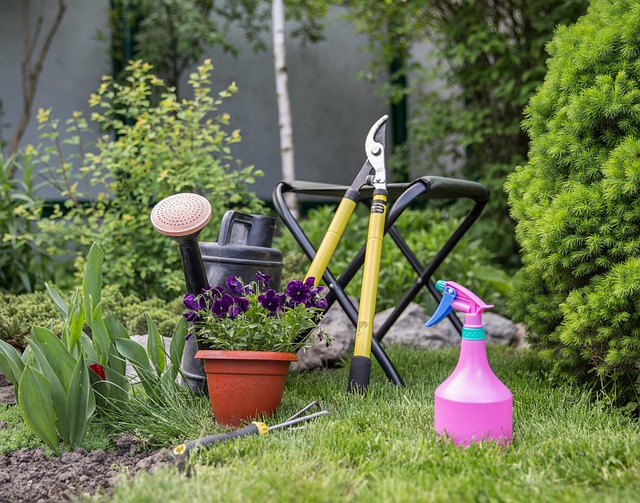Designing safe, stimulating DIY play structures for kids using non-toxic materials like treated wood, recycled plastic, or robust metal ensures a durable and engaging outdoor experience. Incorporate sensory elements, age-appropriate features, and natural elements to foster creativity, learning, and connection with nature while promoting sustainable practices through projects like raised beds and sensory gardens.
Inspire your kids’ creativity and love for nature with exciting backyard garden projects. This guide explores how to create safe, fun, and sustainable DIY play structures using age-appropriate materials like wood and stones. From simple forts and sensory gardens to elevated beds, we offer creative ideas fostering teamwork, learning, and lasting memories. Discover tips for long-term maintenance, ensuring these projects thrive alongside your children’s growing skills and enthusiasm.
Choosing Safe and Fun Materials for DIY Play Structures
When designing and building DIY play structures for kids, safety should always be a top priority. Opt for materials that are non-toxic, durable, and suitable for outdoor use. Natural wood treated with child-safe finishes, recycled plastic, or robust metal are excellent choices as they provide both strength and longevity while minimizing potential hazards. Avoid using glass, sharp objects, or small parts that could pose choking risks.
Ensure the structures offer a range of sensory experiences without compromising safety. Incorporate elements like smooth ropes for climbing, soft cushions for sitting, or hollow blocks for building dens. Encourage imaginative play by including features such as a small slide, a hanging mobile, or a water table. Regularly inspect and maintain these DIY play structures to guarantee they remain safe and enjoyable for children to explore and enjoy in their backyard.
– Exploring age-appropriate materials
When planning backyard garden projects for kids, it’s essential to explore age-appropriate materials that foster creativity and learning while ensuring safety. For younger children, natural elements like wooden planks, rocks, and branches can be used to build simple structures or create a sensory garden. These DIY play structures can encourage imaginative play and an early connection with nature.
As kids get older, they might be ready for more complex projects such as building raised beds, creating vertical gardens using pallets, or even designing their own mini greenhouses. Incorporating materials like recycled plastic bottles or old tires not only promotes sustainability but also allows for unique and fun garden features that kids can contribute to and enjoy for years.
– Benefits of natural elements like wood and stones
Incorporating natural elements into backyard garden projects, such as wood and stones, offers a multitude of benefits for kids engaged in DIY play structures. These materials provide a sensory experience that enhances their connection with nature, fostering an appreciation for the outdoors from a young age. Wood allows for creative building and crafting, encouraging problem-solving skills and fine motor development. Stones add texture, balance, and stability to structures, promoting gross motor skills and spatial awareness as children stack, arrange, and climb over them.
Furthermore, natural elements are sustainable and eco-friendly alternatives to plastic or synthetic materials. They contribute to a healthier environment by reducing waste and encouraging responsible resource use. By using wood and stones in backyard garden projects, kids can learn about the importance of sustainability while also enjoying imaginative play and developing essential life skills.
Creative Ideas for Backyard Garden Play Areas
Inspire kids’ creativity and love for nature with DIY play structures tailored for backyard gardens. One idea is to construct a whimsical trellis fort using natural materials like branches and vines, offering a unique space for climbing, hiding, and observing garden life up close. Another engaging project involves building a raised garden bed that doubles as a sandbox, where children can plant seeds, water the plants, and engage in imaginative play while learning about gardening. These DIY play structures not only foster a connection with nature but also encourage physical activity and develop important skills like problem-solving and teamwork.
Encouraging kids to engage in backyard garden projects not only fosters their creativity but also connects them with nature. By selecting safe, age-appropriate materials like natural wood and stones for DIY play structures, you can create durable and engaging spaces that promote outdoor play. These creative ideas for backyard garden play areas offer a simple yet effective way to transform your outdoor space into a vibrant and fun environment where children can explore, learn, and cherish their time in nature.
